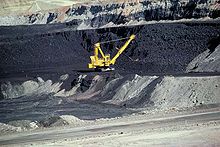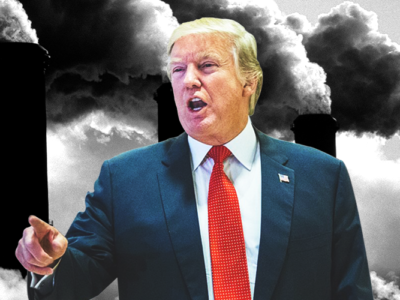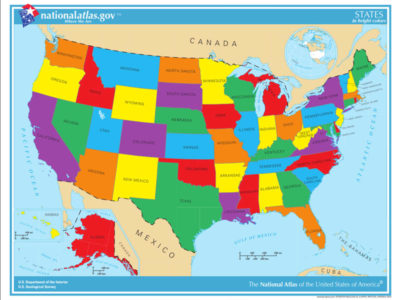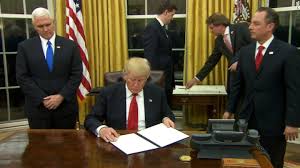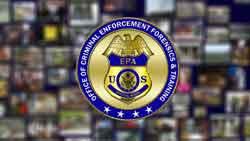Pushing Back Against Presidential Power
It’s time to rethink the amount of power presidents have claimed over regulatory policy.
If there was ever a time to think hard about presidential power, that time is now. That’s a very broad question, but the part most relevant for this blog is the President’s role in controlling government regulation. There is no question that presidents have and will continue to have a huge influence on regulatory policy. The question is whether that influence is in need of checks and balances. In a forthcoming paper, Presidential Administration under Trump, I argue t...
CONTINUE READINGThe ostrich administration
Ostriches actually don't hide their heads in the sand, but the Trump administration sure wants to
It's a myth (of course) that ostriches hide their heads in the sand when they're afraid. Hiding one's head is about the worst possible way to react to danger: it won't make a threat go away, but it will make it awfully difficult to respond effectively. Ostriches are not that stupid. (They apparently do sometimes "flop[] to the ground and remain[] still," which is probably more effective for evading a threat, and can make them look like they have buried their heads.) ...
CONTINUE READINGCoal’s Dismal Future
With or without Trump's policies, those Appalachian coal jobs aren't coming back.
Earlier in August, the governor of West Virginia asked Trump for a billion-dollar bailout of the Eastern coal industry. Under his plan, the federal government would pay power companies $15 per ton to use Appalachian coal. That's a sign of the industry's desperate economic plight. In 2016, global coal use had its biggest drop in history. The U.S. had the largest drop of any country. The decline in U.S. production seems likely to continue, despite a minor blip recently. Th...
CONTINUE READINGPublic Lands Watch: Repeal of Interior valuation rule
Interior Department repeals Obama Administration reforms to the prices paid by energy companies for public oil, gas, and coal resources
The Office of Natural Resources Revenue (ONNR) of the Interior Department published a final rule in the Federal Register earlier this week on August 7th, 2017, that the Department is repealing the “Consolidated Federal Oil & Gas and Federal & Indian Coal Valuation Reform Final Rule.” The 2017 Valuation Rule was published on July 1, 2016 with an original effective date of January 1, 2017. However, it was never gone into effect. Procedurally, the 2017 Valuat...
CONTINUE READINGContinuing Efforts to Put a Price on Carbon
New York regulators and transmission operators consider a carbon adder for wholesale electricity.
The New York Independent System Operator (NYISO) operates the state’s electric grid and conducts wholesale power markets. The New York Department of Public Service regulates the state’s investor-owned electricity providers. Together, they have issued a report concluding that the state, ratepayers, and the environment would benefit from placing a charge on wholesale electric power to reflect the social cost of greenhouse gas emissions. It would have been hard to im...
CONTINUE READING200 Days & Counting: Environmental Threat Assessment
The Trump Administration presents a barrage of threats to the environment. Which threats are worst?
This is the last in our series on the state of play concerning U.S. environmental protection at this point of the Trump Administration. We can classify threats along three dimensions: the likelihood of harm, the seriousness and irreversibility of the harm, and the irreversibility of the institutional or legal change. Here’s an assessment of our topics on that basis. Links to the earlier posts on each topic are at the end. Federal Legislation Because of gridlock, ...
CONTINUE READING200 Days & Counting: State and Local Action
States and cities can do a lot to push back against Trump, but they do face some legal challenges.
In the Trump era, what avenues are open to state and local governments to use self-help to protect the environment? I’ve posted before about the opportunities for state and local governments taking action to protect their own environments. (here and here). Perhaps the most important recent development is the extension of California’s cap-and-trade program to 2030, which Cara has blogged about. (here) That’s an exciting milestone, and a great example of what stat...
CONTINUE READING200 Days & Counting: Executive Orders
Trump loves issuing executive orders. Mostly, they don't mean much.
Trump has issued a flood of executive orders. Many of them are “full of sound and fury. . . signifying nothing.” They actually concern actions that he doesn’t have the power to take himself. Instead, they relate to responsibilities that Congress gave to an administrative agency like EPA, not the White House. There are a few exceptions, but in the environmental area, they're not likely to have huge impacts. Often, when you read that Trump has “rolled back” ...
CONTINUE READING200 Days and Counting: Public Lands
The potential impact of a Trump Administration on our federal public lands.
The federal government owns almost one-third of the land in the United States, primarily concentrated in the Western states. In addition, the federal government is the primary manager of the oceans off the coast of the United States (with the exception of oceans within three miles of the coastline, which are primarily under state authority). Decisions about how to manage these resources will have significant impacts on the environment today and in the future. In particul...
CONTINUE READING200 Days & Counting: Enforcing Environmental Laws
Don't expect the Administration to take the lead in enforcement. Others will need to step up.
As the Bush Administration learned, it can be difficult to pass new legislation or enact new regulations. But another way of gutting environmental rules is much easier: just stop enforcing them. An agency’s enforcement decisions receive essentially no judicial review and precious little publicity. Cuts in enforcement budgets receive even less public notice and are completely unreviewable, though they require congressional action. It’s no wonder that criminal cases ag...
CONTINUE READING





